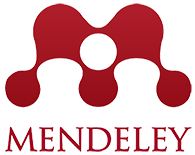The Traditional Religion of the Dayak in West Kalimantan: Analysis of J.U. Lontaan’s Monograph
DOI:
https://doi.org/10.31291/hn.v10i1.597Keywords:
Dayak people, spirits or gods, ancestors, life after death, ritualAbstract
The aim of this paper is to explain Lontaan's views on the religious beliefs of the Dayak people in West Kalimantan as set forth in his book The History of Customary Laws and Traditions of West Kalimantan. It concentrates on the concept of traditional Dayak religion in Lontaan's work, which is still developing today even though the Dayak have embraced religions foreign to their island. In understanding, examining and explaining Lontaan’s monograph, this paper uses a descriptive hermeneutical method. The source of this paper is the book The History of Customary Laws and Traditions of West Kalimantan by Lontaan. The data of this paper is Lontaan’s field observations and interviews involving religious and traditional figures in West Kalimantan, which he compiled in The History of Customary Laws and Traditions of West Kalimantan forty-five years ago. The focus of this paper is the traditional Dayak religion (Kaharingan) and concerns the beliefs in God, spirits and ancestral spirits that it comprises. Based on the results of our research, it is clear that Lontaan succeeds in showing that the Dayaks’ beliefs about spirits or gods and ancestral spirits can affect their daily lives. To connect with God, spirits and ancestral spirits, the Dayak hold various ceremonies. In contrast to other works on Dayak, Lontaan not only studied one of the Dayak tribes, but also examined the culture and religious beliefs of the Dayak Kenayatn, Kayan, Maayan and other Dayak tribes in West Kalimantan and its customs compared to each other.
Downloads
References
Berner, U. (2020). Mountains as sacred spaces. Jurnal STKIP BJM, 2, 1–13. https://www.jurnal.stkipbjm.ac.id/index.php/ocspbsi/article/view/938.
Darmadi, H. (2017). Dayak Asal-Usul dan Penyebarannya di Bumi Borneo (1). Sosial Horizon: Jurnal Pendidikan Sosial, 3(2), 322–340.
Geertz, C. (1960). The Religion of Java (1st ed.). USA: The Free Press of Glencoe, a Corporation.
Gillson, G. (2019). Traversing the Nenbutsu: The Power of Ritual in Contemporary Japanese Buddhism. Japanese Journal of Religious Studies, 46(1), 31–52. Nanzan Institute for Religion and Culture. doi: 10.18874/jjrs.46.1.2019.31-51.
Havilland, W. A. (1993). Antropologi. Jakarta: Penerbit Erlangga (2nd ed.).
Heidhues, M. S. (2003). Golddiggers, Farmers, and Traders in the "Chinese Districts" of West Kalimantan, Indonesia. Cornell University Press.
Keesing, R. M. (1975). Cultural Anthropology: A Contemporary Perspective (1st ed.). Holt, Rinehart, and Winston.
Koentjaraningrat. (1993). Manusia dan Kebudayaan di Indonesia. Jakarta: Jambatan (14th ed.).
Kristianus. (2017). Dialektika Budaya Dayak: Enkulturasi Agama Katolik dengan Budaya Dayak Kayaan. Jurnal Studi Kultural, Volume II (Sekolah Tinggi Agaka Katolik Negeri Pontianak), 87–93. https://journals.an1mage.net/index.php/ajsk.
Lontaan, J. U. (1975). Sejarah, Hukum Adat dan Adat Istiadat Kalimantan-Barat. Pemda Tingkat I KalBar.
Orong, Y. (2020). Corn & Arak (Local Alcohol) as an Alternative to Bread & Wine in the Catholic Ritual of the Eucharist (A Deconstructive Analysis of the Novel “Lembata”). Heritage of Nusantara: International Journal of Religious Literature and Heritage, 9(2), 165-193.
Radam, N. H. (1987). Religi Orang Bukit: Suatu Lukisan Struktur Dan Fungsi Dalam Kehidupan Sosial-Ekonomi. Yogyakarta: Yayasan Semesta.
Rutter, O. (2017). Sejarah Kalimantan (1st ed.). Penerbit Indoliterasi Group.
Saeffudin. (2019). Kearifan Tradisi Masyarakat Dayak Deah di Kalimantan Selatan. Tuah Talino, 253-269. Tahun XIII Volume 13 Nomor 2 Edisi 6 Desember 2019.
Smith-Seymour, C. (2003). Palgrave Dictionary of Anthropology. Macmillan International Higher Education.
Hartati, Sri. (2008). Relasi Antara Religi Dengan Sistem Perladangan Masyarakat Dayak Dosan Kalimantan Barat. Yogyakarta: Fakultas Ushuluddin, UIN Sunan Kalijaga Yogyakarta.
Sulistyowati, E. (2020). Wujud budaya masyarakat Dayak Meratus pada Novel Catatan Ayah Tentang Cintanya Kepada Ibu karya Sandi Filry dan Kontribusinya Terhadap Pembentukan Karakter Generasi Milenial. Jurnal STKIP BJM, 2(2019).
Sumaryono, E. (1996). Hermeneutik: Sebuah Metode Filsafat. Yogyakarta: Kanisius (1st ed.).
Suminto, et al. (2017). Potret Perempuan Dayak Iban, Kayan, Desa, dan Sungkung di Kalimantan Barat. Specta: Journal of Photography, Arts and Media, 1(1), 51-66.
Suparlan, P. (1991). The Javanese Dukun. Jakarta: Peka Publications.
Tanggok, M. I. (2005). Upacara Pemujaan Leluhur Orang Hakka di Singkawang (1st ed.). Jakarta: Pukat.
Tanggok, M. I. (2017). Agama dan kebudayaan orang Hakka di Singkawang: Memuja leluhur dan menanti datangnya rezeki. Jakarta: Buku Kompas.
Tanggok, M. Ikhsan. (2004). Menembus Birokrasi Indonesia (1st ed.). Jakarta: PT. Gramedia Pustaka Utama.
Victor Turner. (1974). The Forest of Symbols: Aspects of Ndembu Ritual. Ithaca dan London: Cornell University Press.
Wallace, A. F. C. (1966). Religion: An Anthropological View. New York: Random House.
Yang, C. K. (2020). Religion in Chinese Society (1st ed.). Amerika: The Regents of The University of California.
Yusriadi. (2018). Di Kalimantan Barat: Identity of Dayak and Melayu. 1(2),1–16. https://www.researchgate.net/publication/331237584_IDENTITAS_DAYAK_DAN_MELAYU_DI_KALIMANTAN_BARAT/
Downloads
Published
Issue
Section
License
Copyright (c) 2021 Heritage of Nusantara: International Journal of Religious Literature and Heritage

This work is licensed under a Creative Commons Attribution-NonCommercial-ShareAlike 4.0 International License.






